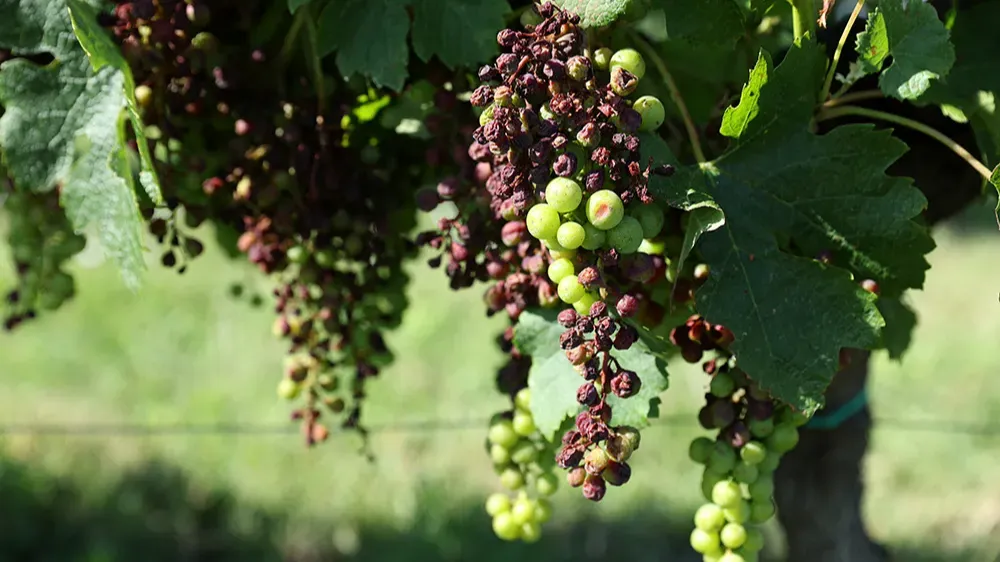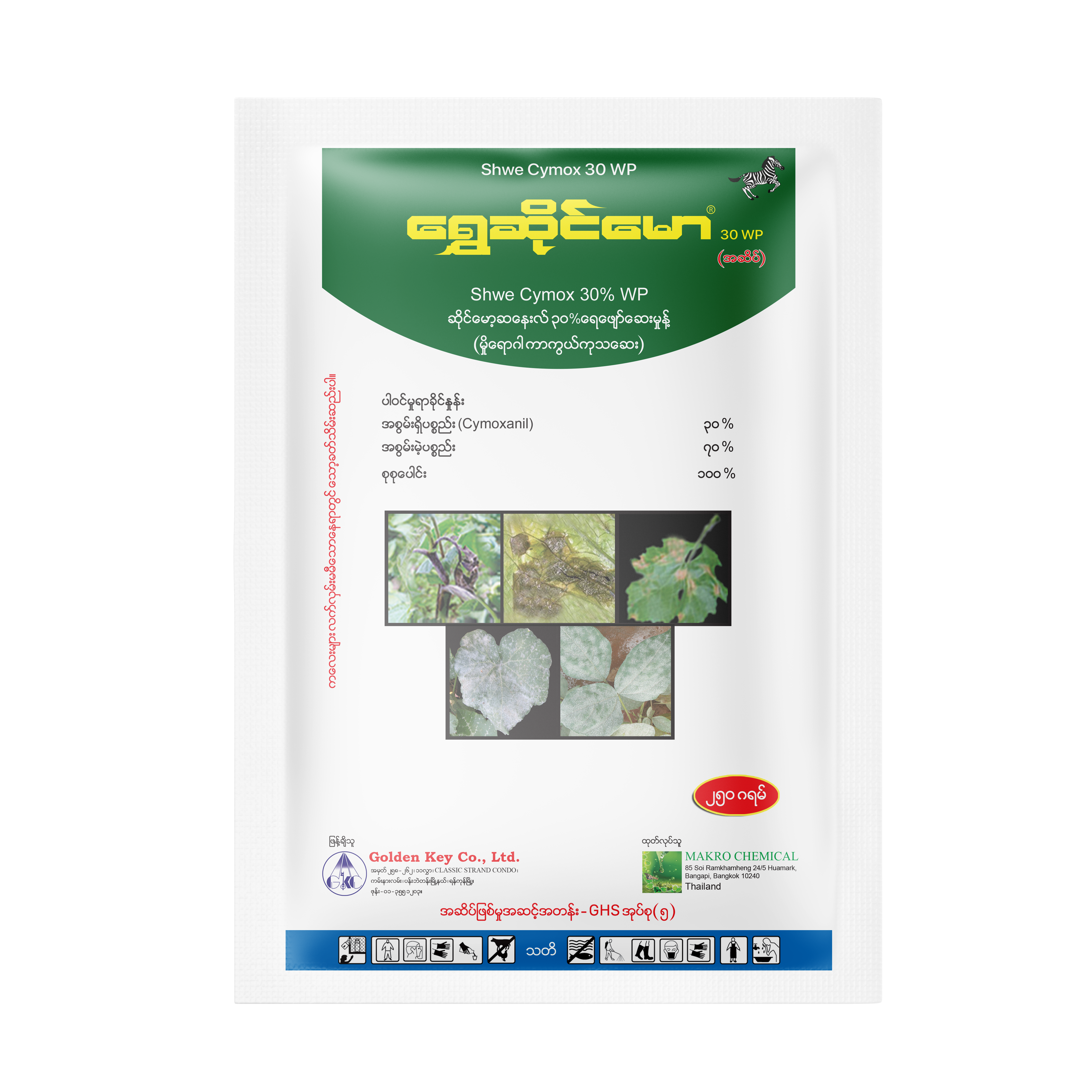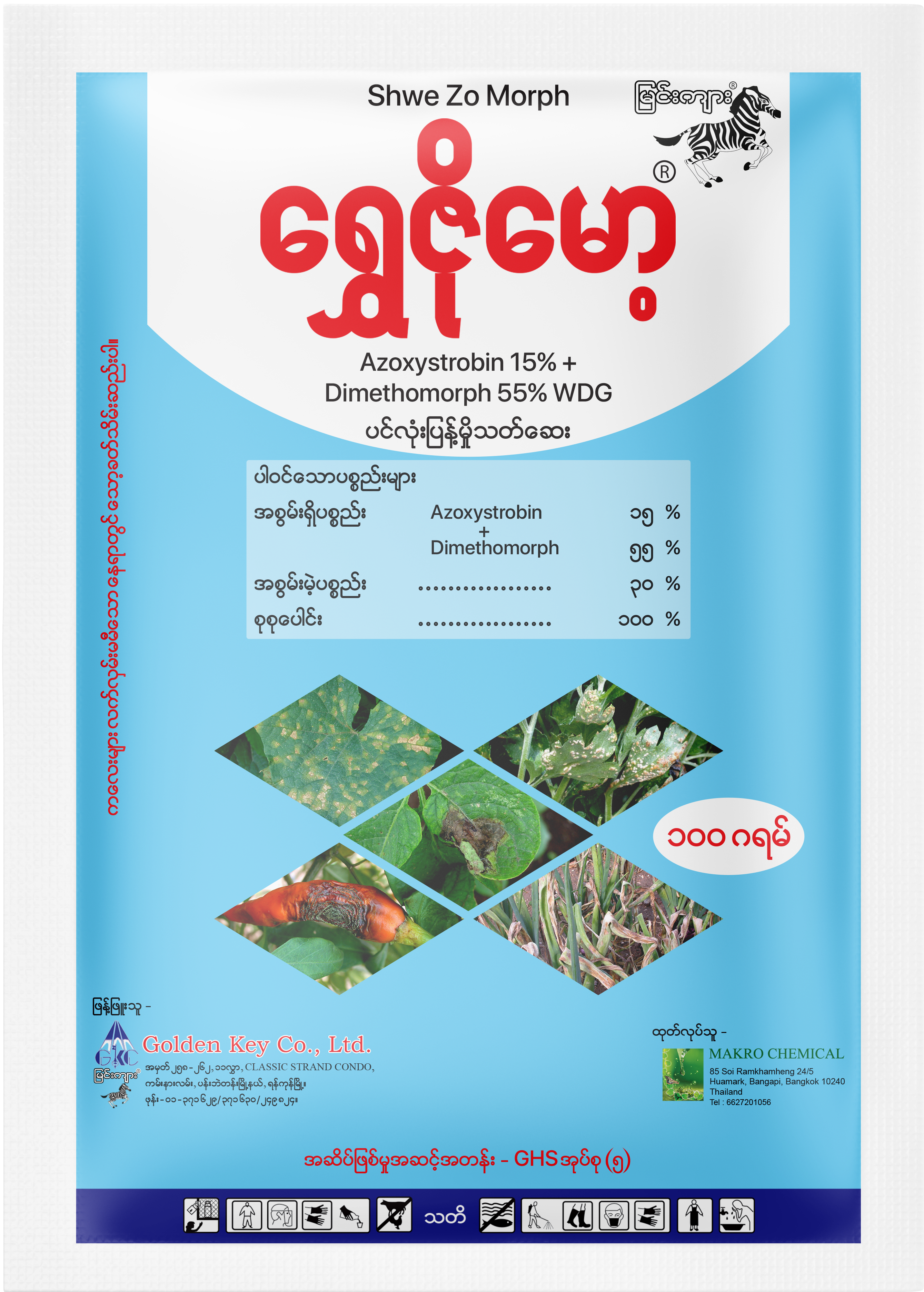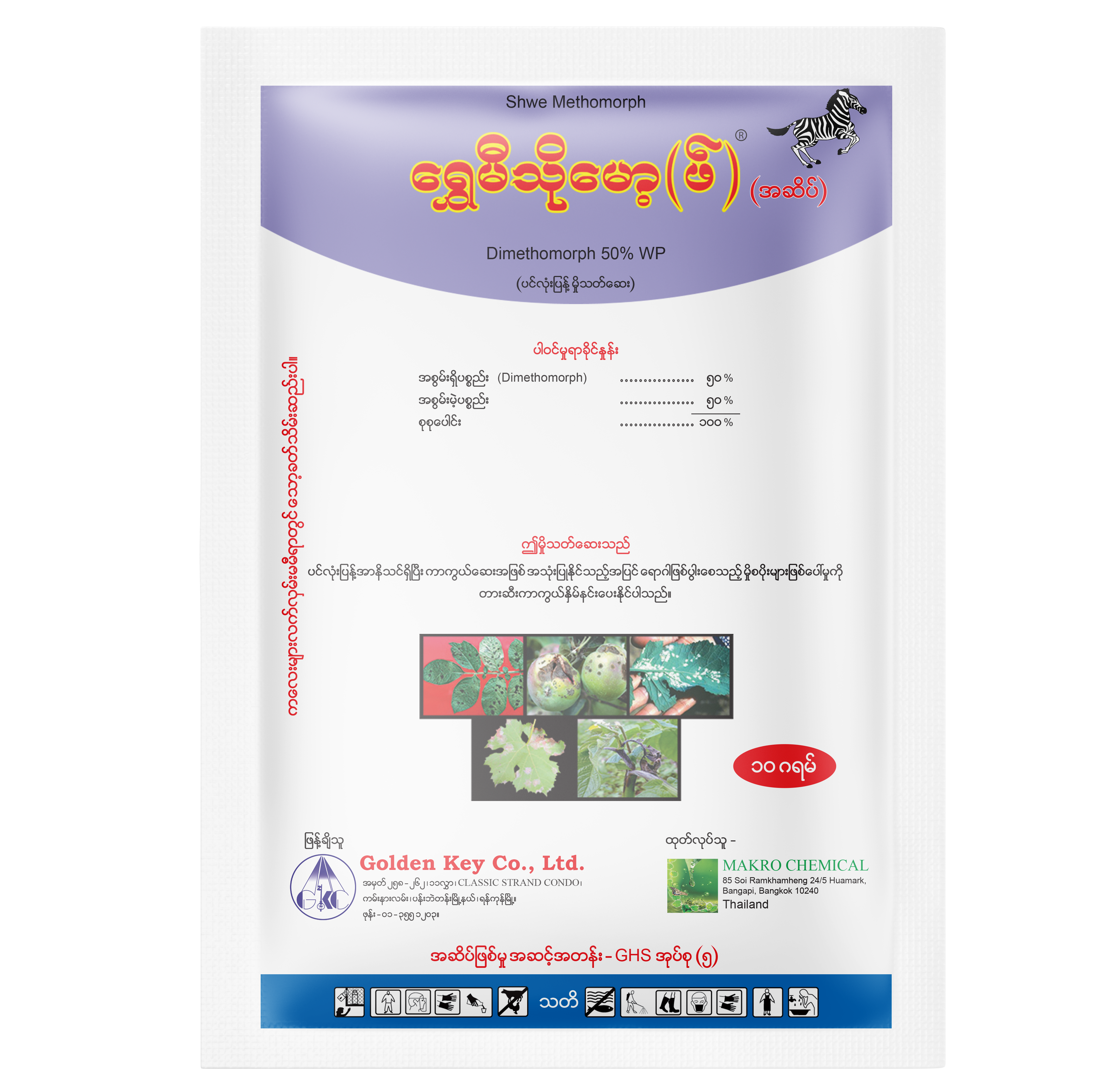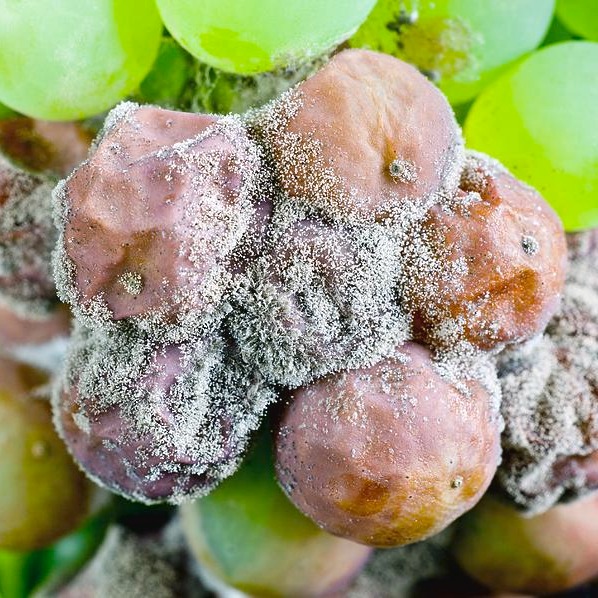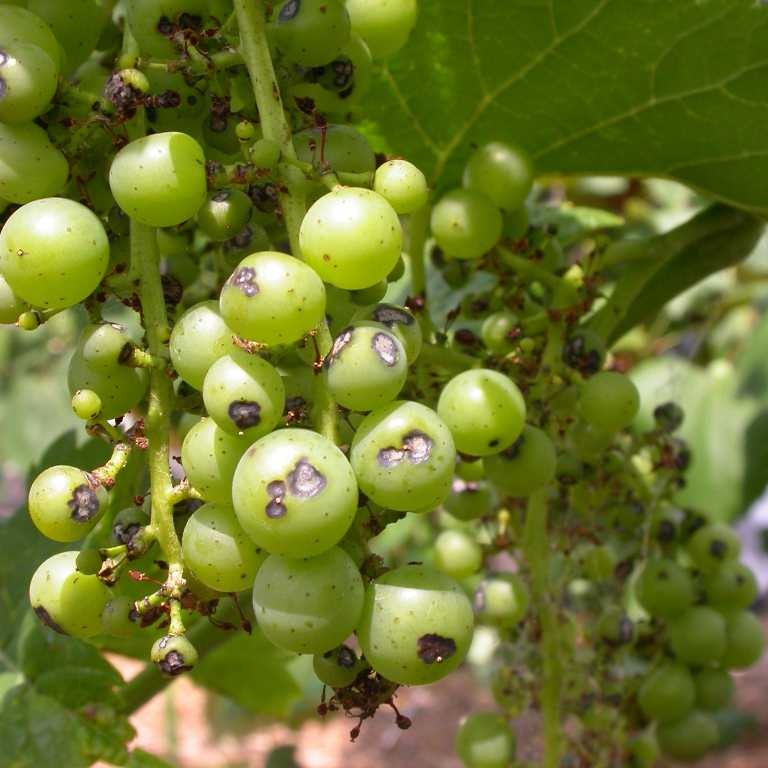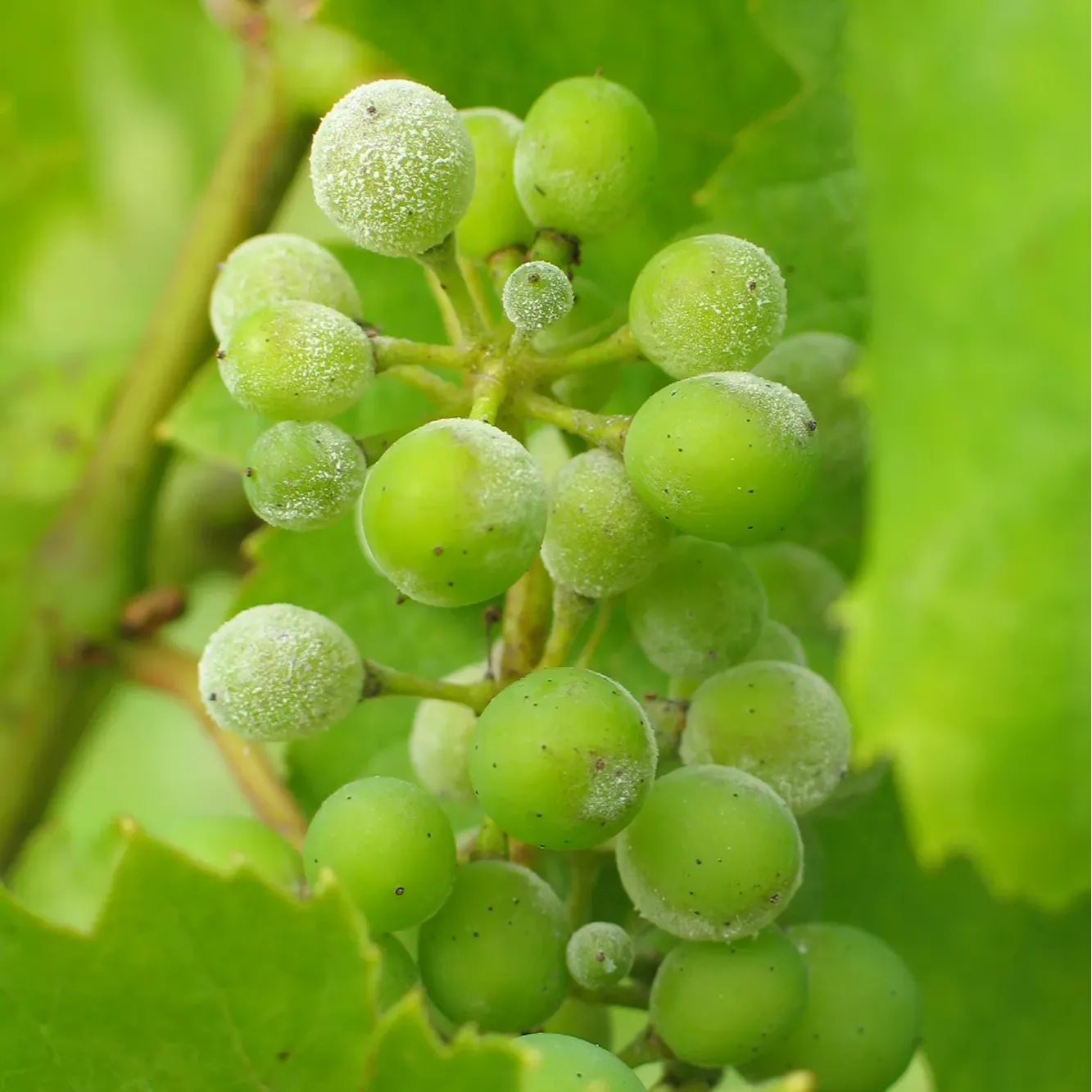Downy mildew
Symptom
When the disease infects young leaves, the earliest symptoms appear as tiny, whitish pinhead-like spots that are visible when the leaves are held against sunlight. These lesions are translucent at the initial stage. On mature leaves, the disease manifests as irregularly shaped spots on the upper leaf surface, usually confined between two veins. At first, the lesions appear yellowish, then gradually turn brown, and eventually become necrotic. Under conditions of rainfall, dew, or persistent humidity, a white fungal growth develops on the lower leaf surface beneath the lesions. This growth consists of the conidiophores and spores of the causal fungus emerging through the stomata. In cases of severe infection and high humidity, nearly all the leaves may drop prematurely. If timely management practices are not undertaken, shoot growth is suppressed, and fruit clusters fail to mature. During the early growing season, when tender shoots, young leaves, tendrils, and succulent tissues are infected, water-soaked patches appear, which later become swollen and covered with white fungal growth. At the flowering and fruit-setting stages, the disease causes shedding of inflorescences and young berries. When infection occurs at later stages of fruit development, the berries initially turn whitish, then brown, and eventually shrivel and dry, leading to easy detachment from the cluster.


